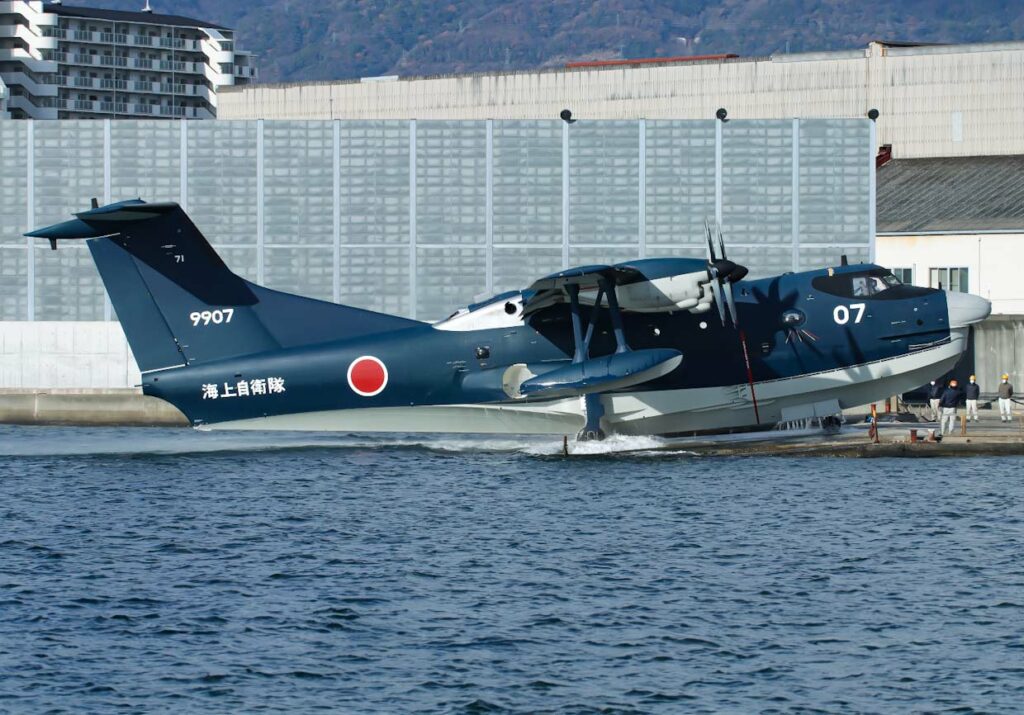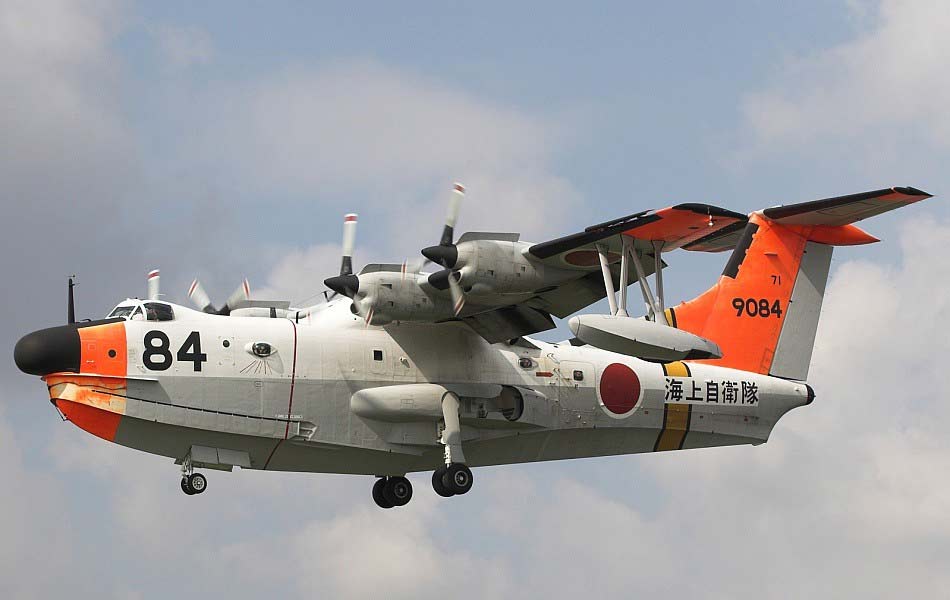Japan’s Shin Meiwa US-1 is a STOL maritime search and rescue amphibious aircraft, capable of operating from both land and sea.
In brief
The Shin Meiwa US-1 emerged from a lineage of Japanese seaplane innovation, designed primarily for search and rescue (SAR) missions. As a true amphibian, it showcased advanced STOL (Short Takeoff and Landing) capabilities, allowing it to operate effectively in challenging maritime environments. Its development was a direct response to the Japanese Maritime Self-Defense Force’s (JMSDF) need for a versatile SAR platform. The US-1 was notable for its ability to conduct rescues in rough sea conditions, supported by its innovative design that included bubble windows for observers, rescue hatches, and a comprehensive suite of SAR equipment.

History of the Development of the Shin Meiwa US-1
The story of the Shin Meiwa US-1 began with its predecessor, the UF-XS, which demonstrated exceptional sea landing and takeoff capabilities. The Japanese government, recognizing the potential for a dedicated SAR aircraft, commissioned Shin Meiwa to develop what would become the PS-1 for anti-submarine warfare (ASW) missions. Despite its high unit cost, the PS-1’s success led to the development of a SAR variant, the US-1, in response to the JMSDF’s requirements. First flown in 1974, the US-1 was a testament to Japan’s post-war aerospace achievements, embodying advanced aerodynamic and maritime operational capabilities.
Design of the Shin Meiwa US-1
The design of the US-1 prioritized versatility and performance in SAR operations. It featured a large sliding door for launching and recovering inflatable dinghies, a loudspeaker system for communicating with survivors, and a dye-marker launcher. The aircraft could carry a significant load of rescue personnel and equipment, with configurations for stretchers, sitting passengers, or even troop transportation. Its amphibious nature allowed it to reach survivors quickly and transport them to land facilities efficiently. The aircraft’s design incorporated bubble windows, retractable landing gear, and uprated engines in later models, ensuring optimal performance in challenging conditions.
Performance of the Shin Meiwa US-1
The US-1 demonstrated notable performance characteristics, with a maximum speed of 310 MPH, a service ceiling of 27,000 feet, and a range of 2,610 miles. Its STOL capabilities were enhanced by a boundary layer control system, which directed propwash over the wings for additional lift. These features made the US-1 adept at performing rescues in rough seas, with the ability to land and take off in wave heights up to 3 meters. Despite its impressive capabilities, the US-1 was phased out in favor of the upgraded US-2 variant, which featured more powerful engines, modern avionics, and a pressurized cabin for higher altitude operations.
Variants of the Shin Meiwa US-1
The Shin Meiwa US-1 series included the initial US-1 model and the improved US-1A, which featured uprated T64-IHI-10J turboshaft engines for enhanced performance. A total of 20 aircraft were built, with later models designated US-1A following engine upgrades. The US-1A Kai, or US-2, introduced further advancements, including Rolls-Royce AE 2100J engines and modernized systems, reflecting continuous evolution in design and capability.

Military Use and Combat of the Shin Meiwa US-1
While primarily designed for SAR operations, the US-1 also demonstrated versatility in ASW roles. The PS-1 variant carried torpedoes, depth charges, and other weaponry for maritime patrol duties. The US-1’s primary legacy, however, lies in its SAR missions, where it conducted over 500 rescues and saved 550 lives by 1999. The aircraft’s ability to operate in high seas made it invaluable for both military and civilian rescue operations, solidifying its place in aviation history.
The Shin Meiwa US-1 represents a unique chapter in aviation, blending advanced aerodynamic design with practical SAR capabilities. Its development and service with the JMSDF underscore Japan’s innovative approach to maritime operations, showcasing a commitment to saving lives in perilous sea conditions. As the US-1 makes way for its successor, the US-2, its legacy continues in the spirit of innovation and dedication to humanitarian missions.
Back to the Seaplanes section.